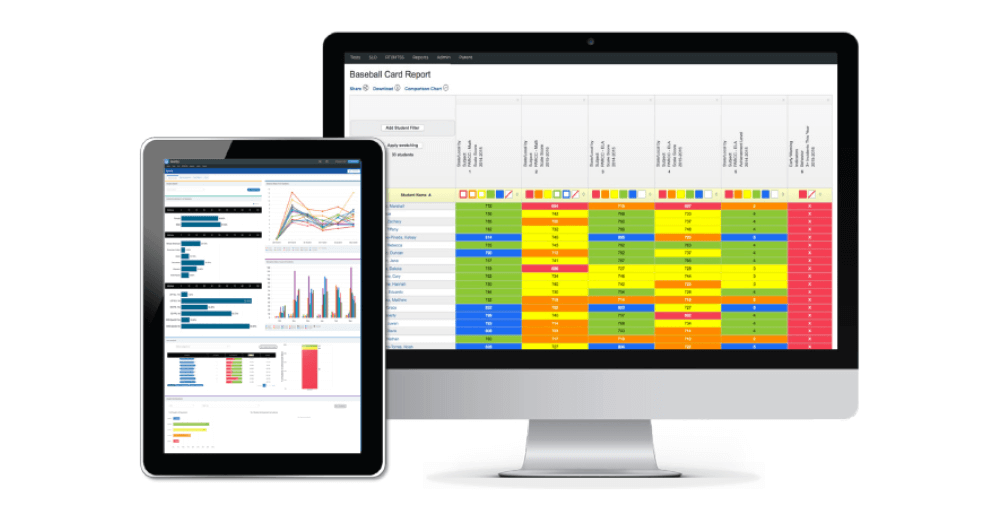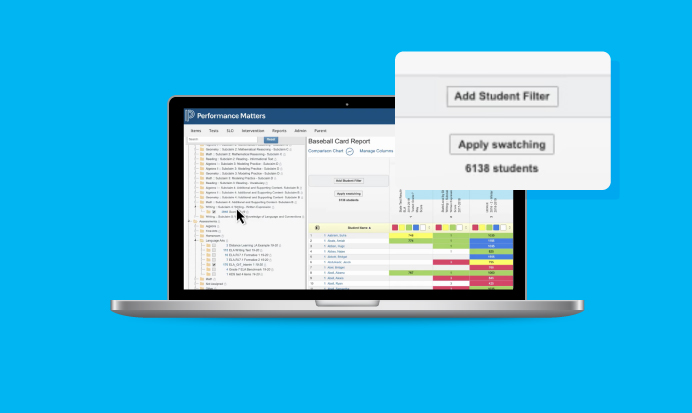Balanced assessment systems offer valuable insight into student progress
Actively monitoring student progress and using data to guide instructional decisions are crucial components of a successful education system and—ultimately—successful students. This year, during the virtual PowerSchool LIVE conference, Kacy Libersat, Senior Administrator of Test Development at Orange County Public Schools, shared valuable insights on balanced assessments in the session titled Using Assessment Data to Drive Intervention for At-Risk Students. A balanced program of assessments supports these efforts by allowing you to get a more complete picture of the whole child. An effective balanced assessment system includes:
- Diagnostic Assessment – These pre-assessments occur before teaching and learning begin to gauge the depth of knowledge and understanding students already have.
- Formative Assessment – These assessments happen throughout a unit or lesson to determine how students are progressing and how instruction can support students right now.
- Interim Assessment –These common assessments are administered across an entire school or district to
- Benchmark Assessment –These assessments are used to measure the academic progress of large groups of students and often expand beyond the district level.
- Summative Assessment –These culminating assessments measure standard-based success at the end of a unit.

Build successful balanced assessments with these essential questions
As we learned in Kacy’s session, each type of assessment plays an important role in providing meaningful and actionable student data for all stakeholders. With a balanced assessment system, identifying students who are at-risk throughout the year is a much more manageable and intuitive task, especially when you consider these essential questions:
- What do I need to implement in my daily instruction to best support my students?
Daily instruction should be guided and informed by formative assessments, such as bell work and exit slips, student surveys, teacher observation, and classwork. - Trends become apparent with unit assessments, common assessments across schools and districts, and mini assessments based on standards. Trends become apparent with unit assessments, common assessments across schools and districts, and mini assessments based on standards.
- Are current practices effective in preparing students to demonstrate proficiency?
Throughout a course, students should be given progress monitoring activities (PMAs) and benchmark assessments to provide teachers with instructional guidance and ensure students are on track for a successful demonstration of mastery. - Did students demonstrate proficiency in standards that will prepare them for future success?
Students should be given a common assessment of learning, or summative assessment, to review student performance and the effectiveness of teaching.
A productive balanced assessment system gives insight into where students started, where they are currently, and how we can focus our instruction to improve student learning.
An effective balanced assessment system requires robust reporting
From high-level views to in-depth item analysis, a balanced assessment system needs reporting that runs the gamut. Teachers and other district stakeholders must be able to identify students who need interventions and—more importantly—determine how to tailor instruction to address the areas where they need the most help. Having the proper tools with the right functionality is key supports your balanced assessment system with custom reports to help you understand what students know, if they are at-risk, and where to focus your efforts and resources.

With virtually limitless custom reports, it’s important to help focus what teachers and administrators are spending their time looking at. Here are three of the most powerful and insightful reports that can be created using Performance Matters:
Baseball Card
Baseball card allows you to create custom reports from any combination of student performance data to view comprehensive analytics on the different measures used to gauge student progress.
Student Item AnalysisTheStudent Item Analysis functionality lets you create interactive, custom reports for any and every student and assessment item. You’ll be able to see how they responded in comparison to their peers at the class, school, or district level.
Distractor Rationale
The distractor analysis feature provides specific details about student answer choice, specifically the misconceptions they may have had that prompted them to select the incorrect answer.
Ultimately, you want the tools to provide actionable data to support your balanced assessment system, so that you know who needs intervention and when or where to direct your focus.This is accomplished efficiently and securely using Performance Matters.
Tips for effectively implementing Performance Matters in your district:
- A good place to begin may be with high school principals, for example. Let them get a grasp of the capacity of the data, so they can help teachers understand how they can use that data at the classroom level—a crucial step in getting that initial buy-in.
- Consider starting with a focus area or 1-2 subject areas that are most likely to get buy-in. Then, within that focus area, start at the high-level view, drilling down over time into student item analysis and distractor rationale.
- Performance Matters is a very powerful tool that can become overwhelming without focus, so it’s important to start with the end in mind. Be clear about the kind of data you need. How should you build your assessments to be able to get to that data?
- Work with the Curriculum department to integrate with PLCs, using it in subject-area professional development and working with subject-area coaches. Have teachers start using Performance Matters themselves to run their own formative assessments through—this is when the true value of Performance Matters becomes indispensable.
Learn More
To learn more about creating balanced assessments and how they can inform effective teaching, check out our award-winning product, Performance Matters.
Watch a Demo